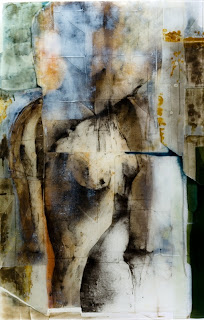 There has been a lot of charges flying in Portland, Oregon following concerns by state regulators over alarming concentrations of dangerous substances – carcinogenic metals cadmium and arsenic- in the air around the Southeast Portland Bullseye Glass (BE) manufacturing facility and whether Bullseye Glass understands the public interest and if they support stronger environmental standards for the industry.
There has been a lot of charges flying in Portland, Oregon following concerns by state regulators over alarming concentrations of dangerous substances – carcinogenic metals cadmium and arsenic- in the air around the Southeast Portland Bullseye Glass (BE) manufacturing facility and whether Bullseye Glass understands the public interest and if they support stronger environmental standards for the industry.
BE has posted a letter outlining how the Oregon Department of Environmental Quality (DEQ) is proposing a set of sweeping “temporary” regulations that will severely curtail BE’s glass production, which BE feels is without clear supporting scientific evidence or an understanding of how they make colored glass.
The primary issue is the use of trivalent chromium—also referred to as Cr(III). Both DEQ and EPA have acknowledged there is no clear evidence of acute or chronic health risks based on BE’s use of Cr(III). The limitations proposed are based on politics and anchored in speculation that Cr(III) might possibly change into a more toxic form of chromium—Cr(VI) in our furnaces.
Scientific evidence clearly indicates the furnaces won’t turn Cr(III) into Cr(VI). If they did, the BE glass would be ruined. According to BE, Cr(III) is essential to BE producing colored glass.
According to BE: “Scientific evidence shows our use of the compound is not harmful. Nevertheless, DEQ wants to restrict Bullseye from using Cr(III) for an extended period of time. They are essentially basing these rules on an assumption of guilt without any proper supporting scientific or factual evidence.
These newly proposed regulations are based on politics and fear, not science and fact. They come right after DEQ’s executive director was forced to resign and the supervisor of the air quality department left the agency.
If we are not allowed to use Cr (III), we can no longer make green glass. On top of our voluntary suspension of cadmium glass production until our baghouse is in place, this new limitation would eliminate 50% of our product line. It would result in employee layoffs, huge economic impacts to Bullseye and our worldwide customers, and could even drive us out of business.
Until March 30, the Oregon Department of Environmental Quality wants to know your opinion on whether or not to adopt temporary rules that are targeted to affect only one specific industry – the colored art glass industry.They could set a precedent that could affect every other colored glass manufacturer in the United States.
Again, DEQ is accepting public comment regarding the temporary rules until March 30 at 5:00 pm (PDT). To read the draft rules and submit comments, visit http://1.usa.gov/1LtqPaY“
Bullseye asks for messages of support be sent: “Please let DEQ and the Environmental Quality Commission know whether you agree with the points, and let them know how you would be affected by the temporary or permanent loss of Bullseye’s products.”
Click HERE to jump to Bullseye Glass’ message.


